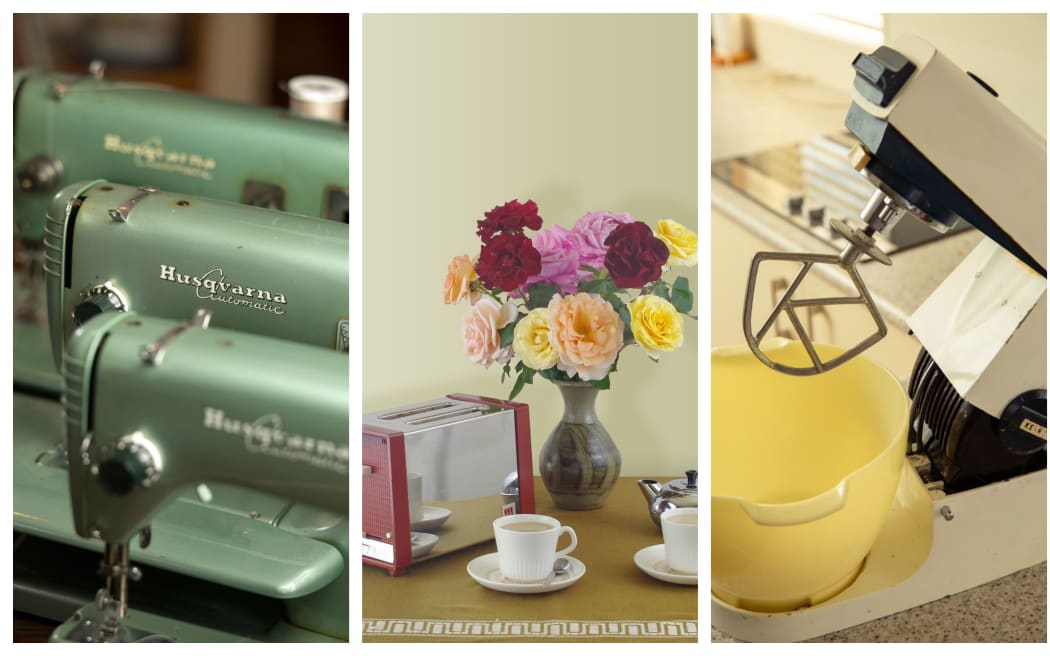Do you have one of those appliances that just goes and goes because it's so well designed and well made?
Bryan Wall is a product test writer at Consumer New Zealand and has done a series called Design for Life - looking at appliances and products which have more than stood the test of time.
He has three favourite products; the green metal Husqvarna sewing machine, the Kenwood Chef mixer and the New Zealand-made Zip AT3 toaster.

Photo:
The Husqvarna Sewing machine, manufactured in the 1950s, was so well-made its warranty lasted until 2000, Wall tells Summer Times.
“My wife has got one of these, which started my interest in it. I've always loved the way it looks, it was first manufactured in the 1950s, I think 1955, it's the type 21 automatic.
“It's this gorgeous green colour, a sort of streamline Art Deco-looking product with very robust dials and knobs and so on.
“But it just works, it just doesn't fail.”
The Husqvarna has loyal fans throughout the country, he says.
“I spoke to a repair guy, Gary Hucker, he's got a company called In Stitches down in Motueka. And he loves the thing he said he's been repairing machines for over 30 years.
He says it’s the most reliable consumer sewing machine he's ever come across.”
So, what makes it such a great product? It’s about the fundamentals, he says.
“It's well designed, the materials they've used are really robust, the gearboxes and the pulleys and so on.
“But it's also easy enough to service as well. The instruction manual that came with it, has servicing information, so you can service it at home - where you oil it, how you repair the belts, and so on.”
This sturdy model was replaced in the 1960s and was never quite the same, he says.
“It wasn't anywhere near as robust because the gears would break. So, this was like the perfect product, they didn't really make a better one, unfortunately.”
The Kenwood Chef became a staple for home bakers in the 1960s, he says.
“Kenwood was set up by a guy called Kenneth Wood - funnily enough - in the 1950s,
“He decided at the end of that decade, he wanted to redesign and get a more modern look. So, he put the call out to British industrial designers and found this guy called Kenneth Grange, who designed this futuristic looking mixer, which was totally unlike the predecessor.”
Modern Kenwoods retain the original design DNA, he says.
“Again a well thought out, user-friendly, well-built product I think Kenneth Grange, now a knight Sir Kenneth Grange, talks about just the quality of products and using thicker, heavier materials to give that feeling of longevity and quality, but also using these materials made it last longer.”
Because the product lasted so long it has become part of family memories, he says.
“They get nostalgic associations with these products, because they're with them throughout their childhood, they’re producing food for the family, and they essentially fall in love with them, they become part of their family and so they look after them.”
The Kiwi-designed Zip AT3 toaster remains a design classic still going strong in many homes, he says.
ZIP started off as a heating company, I think a lot of people will know of Zip hot water cylinders you'd find in public halls and staff rooms to make your cup of tea from.”
In the 1950s the company branched out, Wall says. The company started to make its own toasters in Lower Hutt.
“They started employing industrial designers and decided to manufacture and design their own toasters again a very simple looking product which is almost timeless in that respect, it doesn't look out of place doesn't look as dated as some of the other products that we might see in charity shops.
“It was well engineered, they used quality materials for the heating elements and the springs. They also made the slots wider because a lot of New Zealanders would still cut their own bread, they wouldn't buy pre-sliced bread. So, people would generally cut thicker pieces of bread. And they needed wider slots.”
Simple innovations such as this made it a successful product, he says.
“My mother in law’s got one, it toasts really well, I don't know why maybe it's to do with the quality of the element, but you just get a really good toasts on it all the time - they just don't fail.”
Wall recommends looking out for these design classics in charity shops.
“They'll do most of the jobs the modern machines will do and they're likely to last for longer, and they will certainly cost you a lot less.”

